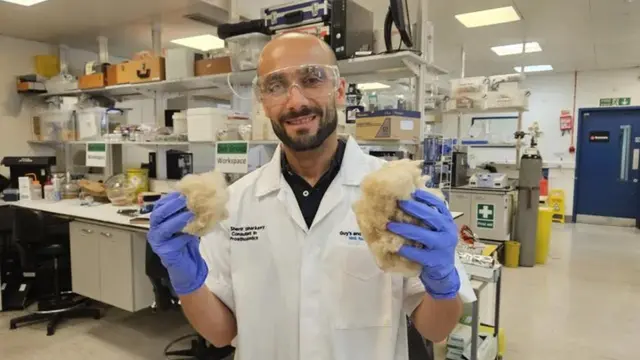Researchers at King’s College London, UK, found that a type of keratin extracted from human hair can be used to make toothpaste, which can not only effectively repair tooth enamel, but also prevent the occurrence of early tooth decay, bringing sustainability and clinical benefits to oral care.

According to IT House, the problem of tooth enamel erosion is becoming more and more prominent around the world, and factors such as diet, aging and lifestyle are the main triggers. Dentists warn that with the increase in consumption of acidic drinks and processed foods, dental problems are becoming more serious among young people.
Enamel is the outermost protective layer of teeth and, unlike bones or hair, cannot regenerate. Dr. Sherif Elsharkawy, consultant in restorative dentistry at King’s College London, said: “Once you lose tooth enamel, you can never recover. ”
Researchers have found that keratin forms a protective coating when it comes into contact with minerals in saliva that is highly similar in structure and function to natural tooth enamel. Laboratory tests have shown that keratin-based treatment options are able to completely stop the further development of caries and close exposed nerve channels, thereby alleviating tooth sensitivity problems.
Compared to traditional fluoride toothpaste, keratin is able to form a dense layer of minerals that not only provides structural protection but also relieves symptoms, potentially reducing the need for fillings or crowns for early-damaged teeth.
In the study, scientists extracted keratin from wool. When applied to the surface of the teeth, this protein forms a crystal-like scaffold structure that continuously attracts calcium and phosphate ions over time, eventually forming an enamel-like protective coating.
Sara Gamea, a postdoctoral researcher at King’s College London, said: “This technology bridges the gap between biology and dentistry, providing an environmentally friendly biomaterial that mimics natural processes. She also noted that keratin can be sustainably obtained from biological waste such as hair and skin, avoiding toxic and undurable synthetic resins used in traditional restorative dentistry. In addition, the natural color of keratin is closer to the tooth itself, and the restorative effect is more natural and less noticeable, improving clinical results while improving patient satisfaction.
The researchers expect keratin-based enamel regeneration technology to be marketed in the next two to three years. It may be applied as a toothpaste for everyday use or as a professional nail polish-like gel for targeted repairs.
The team hopes to bring this treatment option to mainstream dentistry as soon as possible by working with the right partners. If successful, this approach could revolutionize the face of preventive and restorative dentistry, potentially even making a simple haircut the starting point for a stronger, healthier smile.
The study was published in the journal Advanced Medical Materials.